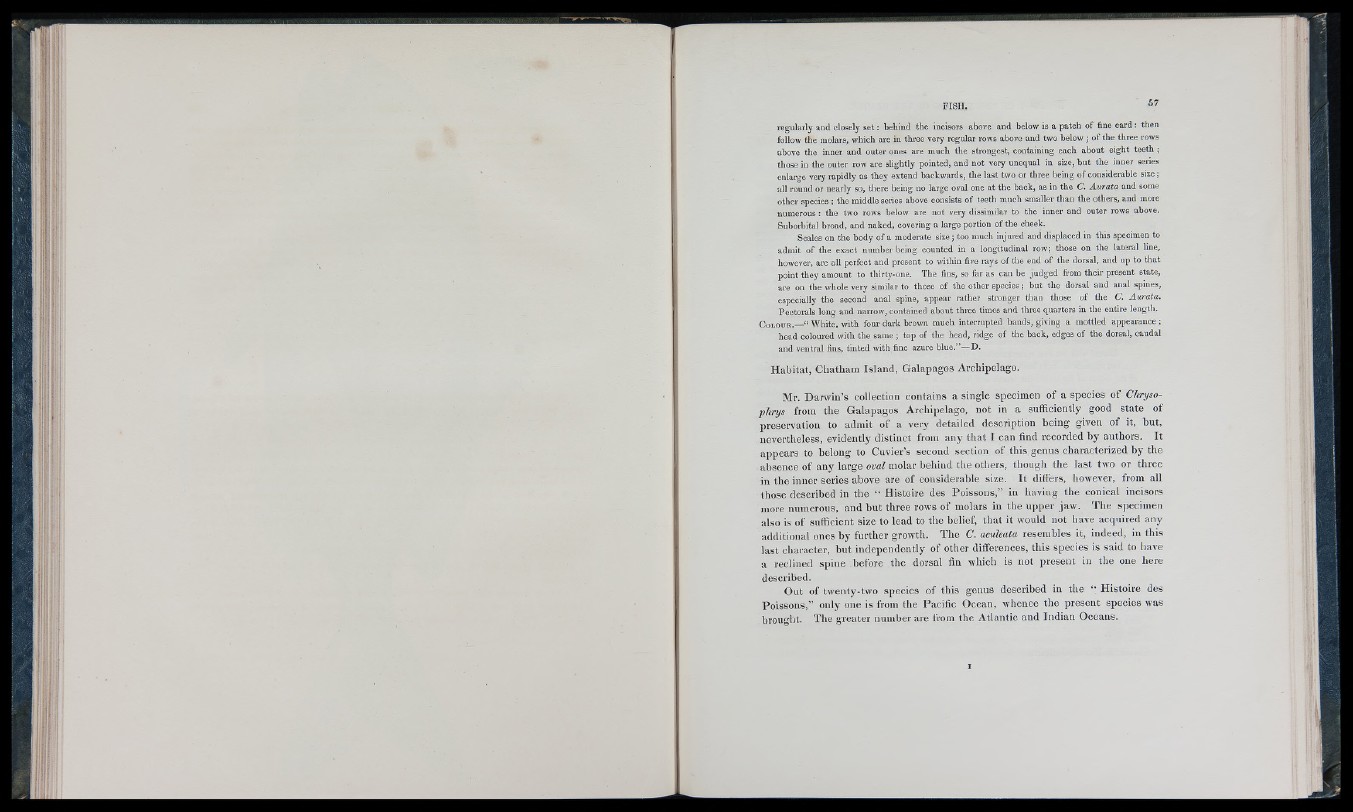
regularly and closely s e t: behind the incisors above and below is a patch of fine c a rd : then
follow the molars, which are in three very regular rows above and two below ; of the three rows
above the inner and outer ones are much the strongest, containing each about eight teeth ;
those in the outer row are slightly pointed, and not very unequal in size, but the inner series
enlarge very rapidly as they extend backwards, the last two or three being of considerable size;
all round or nearly so, there being no large oval one a t the back, as in the C. A u ra ta and some
other species ; the middle series above consists of teeth much smaller than the others, and more
numerous : the two rows below are not very dissimilar to the inner and outer rows above.
Suborbital broad, and naked, covering a large portion of the cheek.
Scales on the body of a moderate size; too much injured and displaced in this specimen to
adm it of the exact num ber being counted in a longitudinal row; those on the lateral line,
however, are all perfect and present to within five rays of the end of the dorsal, and up to that
point they am ount to thirty-one. The fins, so far as can be judged from their present state,
are on the whole very similar to those of the other species; but the dorsal and anal spines,
especially the second anal spine, appear rather stronger than those of the C. A urata.
Pectorals long and narrow, contained about three times and three quarters in the entire length.
C o l o u r .— “ W hite, with four dark brown much interrupted bands, giving a mottled appearance ;
head coloured with the same ; top of the head, ridge of the back, edges of the dorsal, caudal
and ventral fins, tinted with fine azure blue.”—D.
Habitat, Cliatham Island, Galapagos Archipelago.
Mr. Darwin’s collection contains a single specimen of a species of Cliryso-
pkrys from the Galapagos Archipelago, not in a sufficiently good state of
preservation to admit of a very detailed description being given of it, but,
nevertheless, evidently distinct from any that I can find recorded by authors. It
appears to belong to Cuvier’s second section of this genus characterized by the
absence of any large oval molar behind tlie others, tliough the last two or three
in tlie inner series above are of considerable size. It differs, liowever, from all
those described in the “ Histoire des Poissons,” in having the conical incisors
more numerous, and hut three rows of molars in the upper jaw. The specimen
also is of sufficient size to lead to the belief, that it would not have acquired any
additional ones by further growth. The C. aculeata resembles it, indeed, in this
last character, but independently of other differences, this species is said to have
a reclined spine before the dorsal fin wltich is not present in the one here
described.
Out of twenty-two species of this genus described in the “ Histoire des
Poissons,” only one is from the Pacific Ocean, w’hence the present species was
hrouglit. The greater number are from the Atlantic and Indian Oceans.